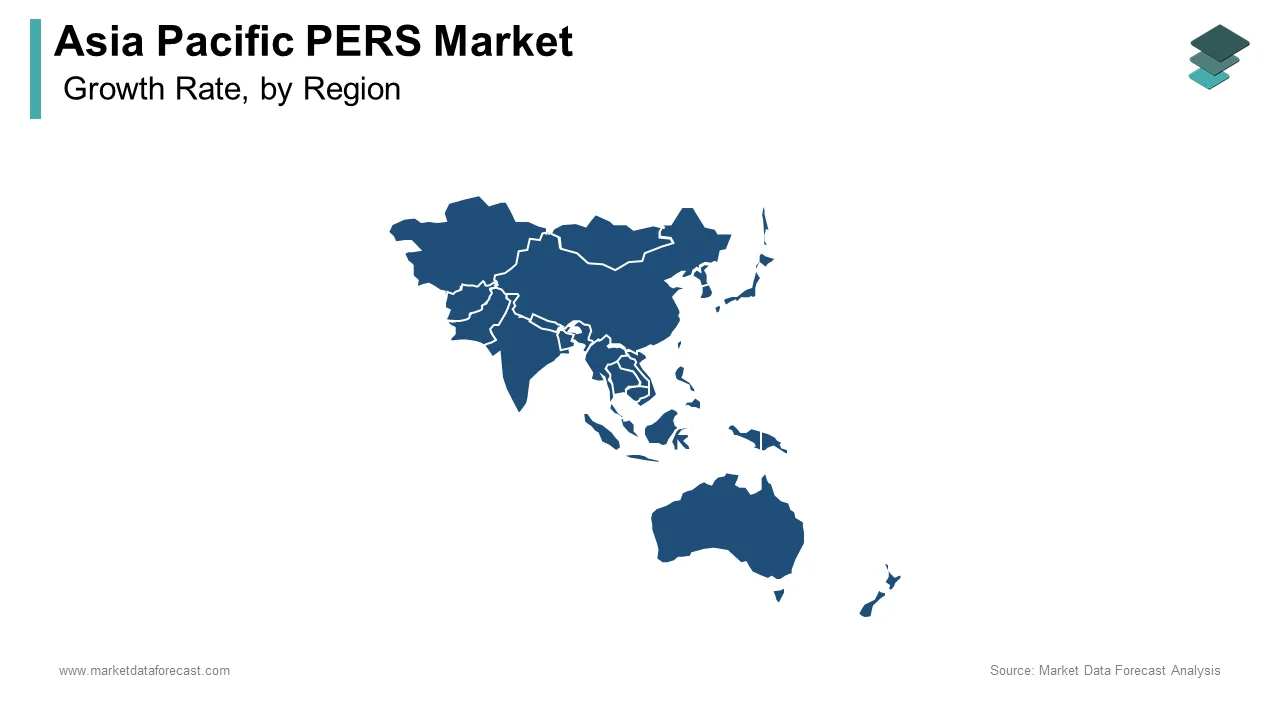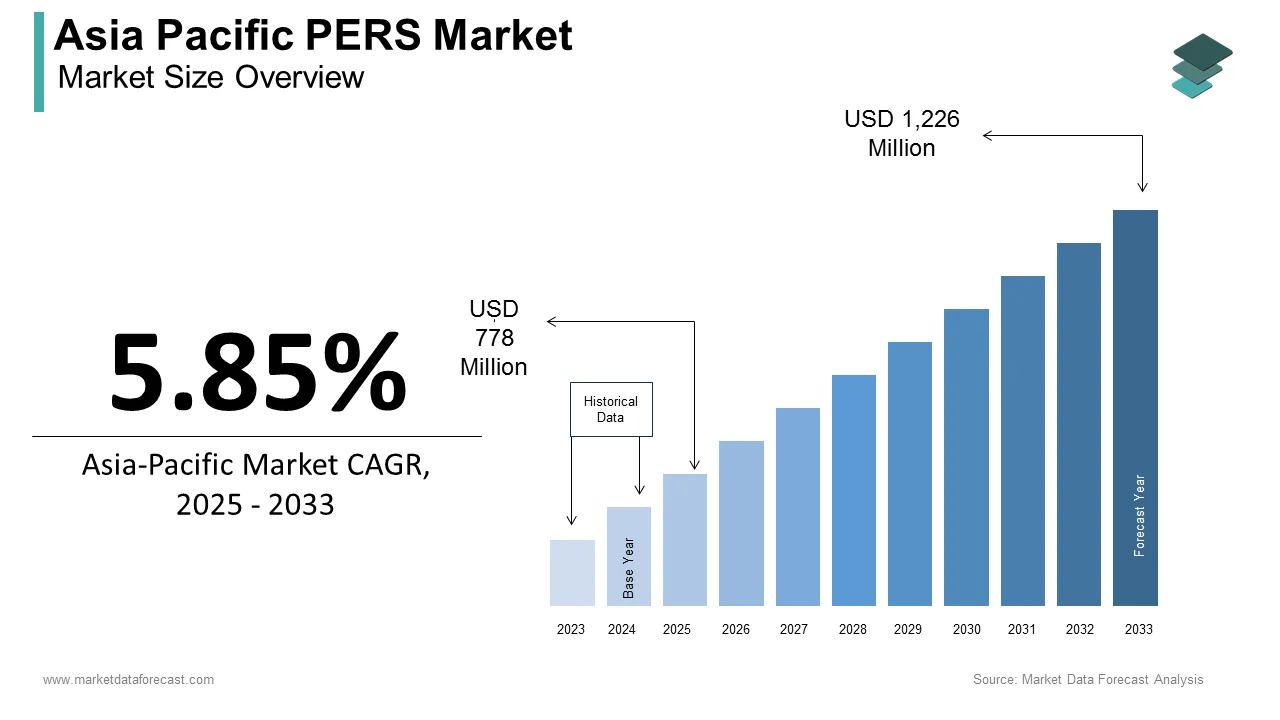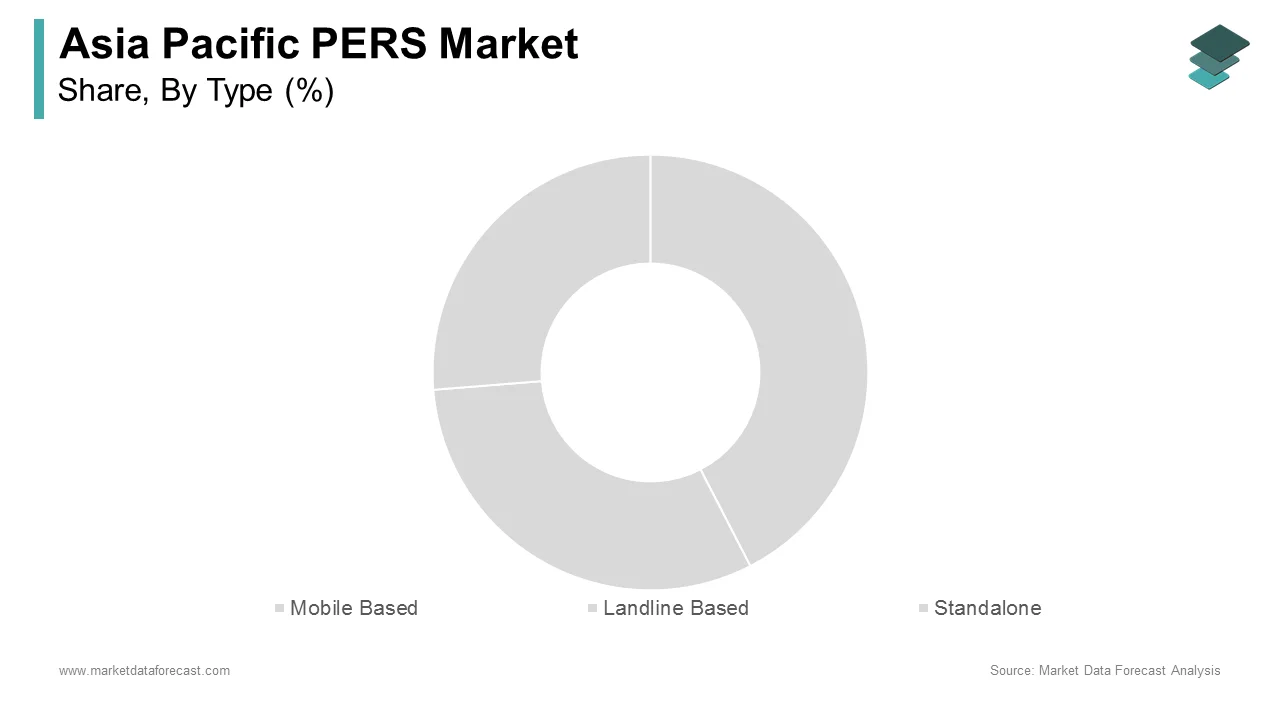Asia Pacific PERS Market Size, Share, Trends & Growth Forecast Report By Type , End User, & Country (India, China, Japan, South Korea, Australia, New Zealand, Thailand, Malaysia, Vietnam, Philippines, Indonesia, Singapore and Rest of APAC) – Industry Analysis From (2025 to 2033)
Asia Pacific Personal Emergency Response Systems (PERS) Market Size
The size of the Asia Pacific personal emergency response systems (PERS) market was valued at USD 735 million in 2024. This market is expected to grow at a CAGR of 5.85% from 2025 to 2033 and be worth USD 1,226 million by 2033 from USD 778 million in 2025.
MARKET DRIVERS
Increase in Population and Growing Geriatric Population
Personal emergency response systems are the medical devices where individuals call for medical help during an emergency. These devices are very innovative and contact the emergency care services or the other family members. Other than the use of patients during an emergency, these devices are also used for general purposes to ensure safety and security when living or traveling alone.
The demand for the Asia Pacific personal emergency response systems market is increasing due to the increase in the growing population and the rising geriatric population in the region. Also, an increase in technological advancement for developing innovative and efficient devices for the people, as these devices are used to call requests for help in an emergency or critical situation, drives the growth of the Asia Pacific personal emergency response systems market.
Growth of Smartphone-Based Mobile Applications for Health
In addition, an increase in the rising awareness about self-care and personal health-care monitoring systems available in the market and an increase in the preferences towards going digital and smartphone-based mobile applications are gaining more popularity in Android and IOS systems, increasing the market growth.
Growing government initiatives for developing well-equipped, advanced medical and healthcare services as well as infrastructure for patients and other people, as well as the lack of disease management, will help propel the market growth. On the other hand, the increase in the competition between the players for intruding new products with advanced facilities and features such as home security, disease management, and home automation will also help in increasing the growth of the Asia Pacific personal emergency response systems market.
Furthermore, an increase in the growing application associated with personal emergency response systems, as well as an increase in the prevalence of chronic diseases among people, will propel the demand for emergency response systems in the market.
MARKET RESTRAINTS
Data Security Concerns in Personal Emergency Response Systems
The lack of awareness among people about the usage and benefits of personal emergency response systems is majorly restraining the growth of the market. Also, the lack of skilled and trained individuals for operating and monitoring the systems is hampering the growth of the market.
In addition, the concerns and issues related to data security in personal emergency response systems, along with the high costs associated with PERS for manufacturing and installing them, are affecting the growth of the Asia Pacific personal emergency response systems market.
REPORT COVERAGE
|
REPORT METRIC |
DETAILS |
|
Market Size Available |
2024 to 2033 |
|
Base Year |
2024 |
|
Forecast Period |
2025 to 2033 |
|
Segments Covered |
By Type, End user, and Region. |
|
Various Analyses Covered |
Global, Regional & Country Level Analysis, Segment-Level Analysis; DROC, PESTLE Analysis, Porter's Five Forces Analysis, Competitive Landscape, Analyst Overview of Investment Opportunities |
|
Countries Covered |
India, China, Japan, South Korea, Australia, New Zealand, Thailand, Malaysia, Vietnam, Philippines, Indonesia, Singapore, Rest Of APAC. |
|
Market Leader Profiled |
ADT Corporation, Life Guardian Technologies LLC, Koninklijke Philips N.V., Tunstall Healthcare Group Ltd, Bay Alarm Medical Company, Philips Electronics N.V., Alert One Services LLC, Medical Guardian LLC, and Others. |
SEGMENT ANALYSIS
By Type Insights
REGIONAL ANALYSIS
Geographically, the Asia Pacific personal emergency response systems market is the third-largest growing market globally. In the forecasted period, the market is estimated to have significant growth in the market share due to the rising elderly people population in the region which is because of the increasing growing population such that India and China hold the largest population in the region and Japan holds the largest population of elderly growing population which will drive the demand for Asia Pacific personal emergency response systems market.

India and China have seen an increase in the market due to an increase in the focus on technological advancement for developing various techniques and devices. Also, an increase in the growing awareness towards going digital, as well as the rising usage of smartphones or wireless devices, is increasing the growth of the market.
Japan, on the other hand, has also seen a boost in market growth because of growing government initiatives with rising investment from government and non-government firms in research and development activities, which are uplifting the growth of the Asia Pacific personal emergency response systems market.
KEY MARKET PLAYERS
Major Companies leading the Asia Pacific personal emergency response systems market Profiled in the Report are ADT Corporation, Life Guardian Technologies LLC, Koninklijke Philips N.V., Tunstall Healthcare Group Ltd, Bay Alarm Medical Company, Philips Electronics N.V, Alert One Services LLC, Medical Guardian LLC, and Others.
MARKET SEGMENTATION
This research report on the Asia-Pacific personal emergency response systems market has been segmented and sub-segmented into the following categories.
By Type
- Mobile Based
- Landline Based
- Standalone.
By End-User
- Home-Based Users
- Senior Living Facilities
- Assisted Living Facilities
- Others.
By Country
- India
- China
- Japan
- South Korea
- Australia
- New Zealand
- Thailand
- Malaysia
- Vietnam
- Philippines
- Indonesia
- Singapore
- Rest Of APAC
Related Reports
Access the study in MULTIPLE FORMATS
Purchase options starting from
$ 2000
Didn’t find what you’re looking for?
TALK TO OUR ANALYST TEAM
Need something within your budget?
NO WORRIES! WE GOT YOU COVERED!
Call us on: +1 888 702 9696 (U.S Toll Free)
Write to us: sales@marketdataforecast.com


